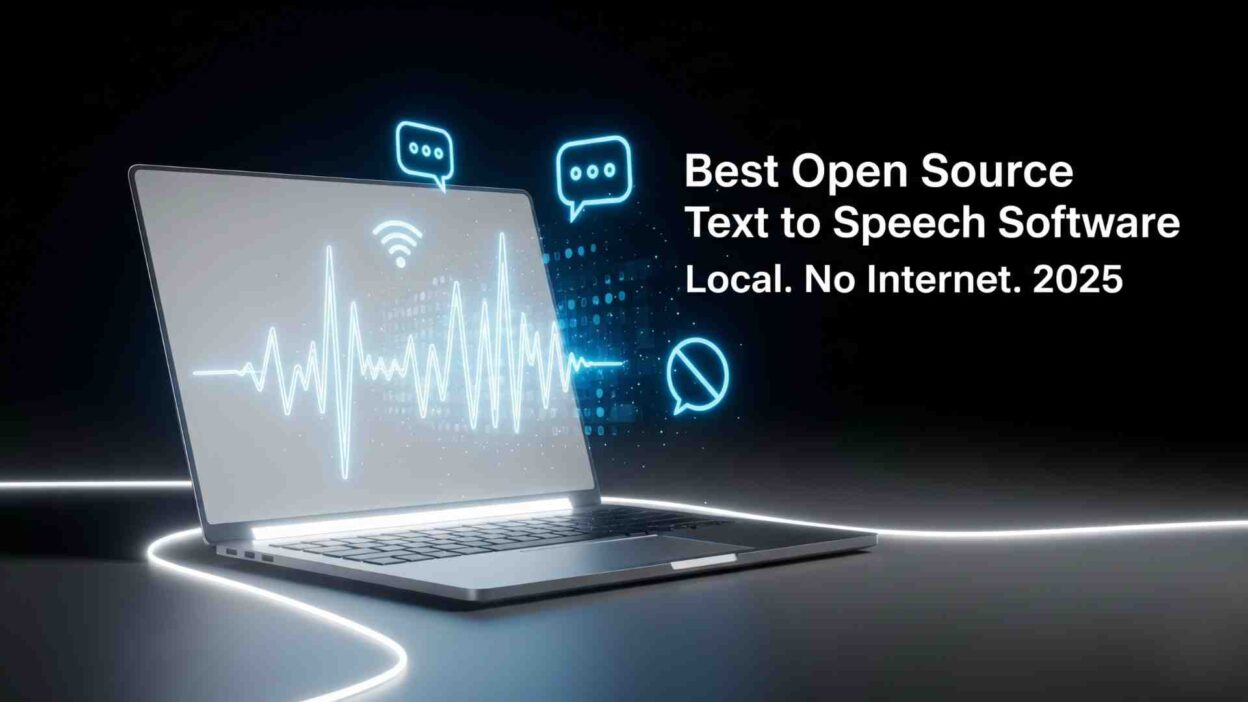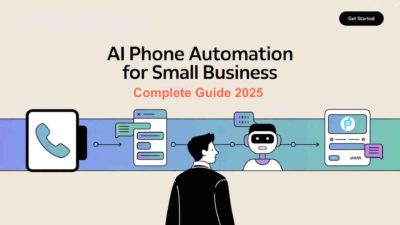TL;DR Open source text-to-speech solutions have revolutionized offline voice generation in 2025. Privacy-conscious users increasingly demand local processing capabilities, driving smart developers to create powerful alternatives to cloud-based systems. Internet dependency frustrates users with poor connectivity, while data privacy concerns fuel demand for offline solutions. Modern open source projects now deliver professional-quality results that rival commercial offerings.
Table of Contents
The landscape has changed dramatically with advanced neural networks running locally. These best open source text to speech software local no internet 2025 options now match commercial quality while providing complete data control. Smart selection saves money while protecting sensitive information.
What Makes Superior Offline Text-to-Speech Software
Top-tier open source TTS solutions prioritize complete offline functionality, ensuring no data transmits to external servers during operation. Smart architecture guarantees privacy protection through local processing, which eliminates latency delays completely. Voice generation happens instantly without network dependencies, providing consistent performance regardless of internet connectivity.
Cost savings reach 100% compared to subscription services. Free software eliminates ongoing license fees, making smart budgeting benefit significantly from open source alternatives. Organizations can deploy unlimited instances without additional licensing costs.
Top-Rated Solutions
eSpeak-NG: Lightweight Champion
eSpeak-NG dominates the lightweight category among best open source text to speech software local no internet 2025 options for basic needs. Minimal resource requirements enable deployment on older hardware, with smart optimization running efficiently across all platforms.
Voice quality sounds robotic but remains clear for utility applications. Supporting 100+ languages covers global requirements with versatility rarely matched by competing solutions. Installation takes minutes on any operating system, while the command-line interface provides scriptable automation for existing workflows.
Pros:
- Extremely lightweight footprint
- Massive language support
- Cross-platform compatibility
- Zero configuration required
- Perfect for accessibility needs
Cons:
- Robotic voice quality
- Limited emotional expression
- Basic prosody handling
- No custom voice training
Festival Speech Synthesis: Academic Excellence
Festival represents decades of academic research in text-to-speech development. University backing ensures continued development, with smart algorithms incorporating extensive research findings. The modular architecture allows component customization, enabling voice database swapping to change speaker characteristics.
The programming interface enables deep integration, while scripting support automates complex operations. Smart development capabilities accelerate custom application creation for specialized use cases.
Pros:
- Research-grade algorithms
- Modular component system
- Extensive documentation
- Active academic community
- Customizable voice models
Cons:
- Complex setup process
- Steep learning curve
- Limited modern voices
- Resource intensive processing
MARY TTS: Professional Quality
MARY TTS delivers professional-grade results through German research excellence. Smart engineering creates natural-sounding speech that approaches commercial quality. The web-based interface simplifies operation, while REST API enables remote control for enterprise deployments.
Voice customization reaches advanced levels with phoneme-level control enabling precise tuning. Smart tools create custom voice personalities tailored to specific brand requirements.
Pros:
- Natural voice quality
- Web-based interface
- REST API integration
- Voice customization tools
- Multi-language support
Cons:
- Large installation size
- Higher resource requirements
- Complex voice training
- Limited real-time performance
Coqui TTS: Modern Neural Excellence
Coqui TTS represents cutting-edge neural networks in the open source TTS field. Deep learning models create human-like speech quality, with smart training producing exceptional results. Pre-trained models provide instant deployment, while custom voice cloning creates personalized speakers that rival professional voice actors.
Python integration enables rapid development, with Jupyter notebook examples accelerating learning curves. Smart documentation guides implementation for developers at all skill levels.
Pros:
- Neural network quality
- Voice cloning capabilities
- Pre-trained model library
- Python ecosystem integration
- Active development community
Cons:
- GPU requirements for training
- Large model file sizes
- Python dependency complexity
- Limited real-time optimization
Mimic 3: Mycroft’s Contribution
Mimic 3 brings smart home intelligence to offline TTS solutions. Voice assistant backing ensures practical optimization, with smart design prioritizing real-time performance. Docker deployment simplifies installation while container isolation prevents conflicts.
Voice variety covers multiple accents and languages, with quality levels balancing performance against resource requirements. Smart optimization adapts to available hardware capabilities.
Pros:
- Smart home optimized
- Docker deployment
- Multiple voice options
- Real-time performance
- Voice assistant heritage
Cons:
- Limited customization options
- Newer project with smaller community
- Docker dependency requirement
- Resource scaling challenges
Technical Comparison
Performance Benchmarks
Voice quality varies dramatically across different solutions. Neural network approaches achieve human-like naturalness, while traditional synthesis methods provide reliable but robotic output. Smart testing reveals significant differences in processing speed, which determines real-time application suitability.
CPU optimization affects deployment costs significantly. Memory usage impacts system requirements, with RAM consumption limiting concurrent operations. Smart resource management prevents system overload during peak usage periods.
Installation Complexity
Setup difficulty ranges from trivial to expert-level among various options. Package managers simplify installation on Linux systems through smart automation that reduces manual configuration. However, dependency management frequently challenges beginners, particularly with Python environments requiring careful version control.
Cross-platform compatibility varies significantly, with Windows support often lagging behind Linux development. Smart developers increasingly target multiple operating systems to maximize adoption.
Voice Quality Assessment
Naturalness measurements compare different solutions objectively. Neural networks consistently outperform traditional synthesis methods, with smart evaluation considering multiple criteria including intelligibility, emotional expression, and prosody control.
Intelligibility scores matter more than naturalness for accessibility applications, where clear pronunciation takes priority over emotional nuance. Advanced systems separate themselves through emotional expression capabilities and mood adaptation features.
Use Cases
Accessibility Applications
Visual impairment support represents the primary application for many users. Screen readers integrate TTS engines seamlessly, with smart accessibility features improving digital inclusion. Learning disabilities benefit from text-to-speech assistance, as reading comprehension improves with audio reinforcement.
Motor impairments that limit typing capabilities find voice output provides essential communication alternatives. Smart systems enable independent digital interaction for users with diverse accessibility needs.
Content Creation
Audiobook production leverages automated narration for cost-effective content creation. Cost savings reach thousands per project compared to professional voice actors. Podcast intro generation creates professional presentations while maintaining voice consistency for brand identity.
Video narration benefits from automated voice generation, making multiple language versions economically viable. Smart localization expands audience reach without proportional cost increases.
Educational Technology
Language learning applications integrate TTS for pronunciation examples, with native speaker simulation improving accent training. Interactive tutorials utilize voice guidance effectively, enabling hands-free instruction for practical learning scenarios.
Automated testing systems provide spoken questions, while oral examination simulation prepares students for real assessments. Smart education adapts to individual learning styles and preferences.
Business Automation
Customer service automation incorporates TTS for voice responses, with call deflection reducing support costs through smart routing that improves efficiency. Internal announcements utilize automated voice generation for emergency notifications reaching all staff.
Training program narration scales without human voice actors, allowing content updates to happen immediately. Smart training systems adapt to organizational needs and evolving requirements.
Installation Guides
Linux Installation Methods
Package managers simplify deployment through APT repositories containing pre-compiled binaries. Smart installation prevents dependency conflicts automatically. Source compilation provides access to latest features, while development tools enable custom modifications.
Docker containers isolate installation environments completely, eliminating version conflicts through smart deployment that scales across systems. Container orchestration enables enterprise-level deployments.
Windows Setup Procedures
Windows installation requires specific procedures, though package managers like Chocolatey automate deployment. Smart tools reduce manual configuration requirements significantly. Binary downloads provide immediate functionality, while installer packages simplify setup processes for non-technical users.
Virtual machine deployment isolates environments effectively. Linux compatibility layers enable advanced features unavailable in native Windows environments through smart virtualization.
macOS Configuration
Homebrew simplifies installation on macOS through automated dependency resolution. Smart tools integrate with system preferences seamlessly. Command-line installation provides expert-level control, while terminal access enables advanced configuration options.
GUI applications wrap command-line engines for user-friendly interfaces that appeal to casual users. Smart design bridges technical complexity without sacrificing functionality.
Performance Optimization
Hardware Requirements
CPU performance determines processing speed for real-time synthesis. Modern processors handle synthesis efficiently, while smart hardware selection optimizes overall performance. RAM requirements vary dramatically between engines, with neural networks demanding substantial memory allocation.
Storage space affects voice model availability, as high-quality voices require gigabytes of data. Smart storage management balances quality against available space constraints.
Configuration Tuning
Audio settings impact output quality significantly. Sample rates affect file sizes, while smart configuration balances quality with efficiency requirements. Voice parameters control speech characteristics including speed, pitch, and volume adjustments for personalized output.
Buffer sizes influence real-time performance, with memory allocation affecting processing latency. Smart tuning optimizes system responsiveness under various load conditions.
System Integration
API interfaces enable application integration through RESTful endpoints that simplify remote control. Smart programming accelerates development timelines significantly. Command-line tools automate batch processing for handling large text volumes.
Plugin architectures extend functionality seamlessly, while third-party extensions add specialized features. Smart ecosystems enhance core capabilities without compromising stability.
Security Considerations
Privacy Protection
Local processing ensures complete privacy by keeping sensitive text within the system. Data retention policies prevent information leakage through automatic cleanup of temporary files. Offline operation eliminates network vulnerabilities while protecting against remote attacks through smart security isolation.
Code Auditing
Open source transparency enables thorough security auditing. Community review identifies vulnerabilities quickly through smart collaboration that improves overall security. License compliance ensures legal usage, with GPL and MIT licenses providing clear guidelines.
Version control systems track all changes, enabling rapid deployment of security patches through community networks. Smart maintenance prevents exploitation of known vulnerabilities.
Access Control
File permissions protect installations from unauthorized access through user account isolation. Smart security follows least privilege principles consistently. Configuration files require protection from tampering, while administrative controls prevent malicious modifications.
Audit logging tracks system usage patterns, with security monitoring identifying unusual activities. Smart detection systems prevent abuse while maintaining system integrity.
Cost Analysis
Free Software Benefits
Open source solutions eliminate licensing costs completely, with enterprise deployment scaling without additional fees. Smart budgeting maximizes technology investments by avoiding ongoing subscription models that drain budgets continuously.
Commercial alternatives cost thousands annually, while best open source text to speech software local no internet 2025 provides permanent ownership. Training costs decrease through comprehensive community documentation and online resources.
Hidden Cost Considerations
Implementation time requires expertise development, with learning curves potentially slowing initial deployment. Smart planning accounts for training investments and skill development requirements. Support costs may emerge from community dependence, though professional services can fill expertise gaps.
Maintenance responsibilities fall on internal teams, requiring prompt attention to security updates. Smart operations planning accounts for ongoing responsibilities and resource allocation.
ROI Calculations
Cost savings justify implementation quickly through immediate elimination of commercial licensing fees. Smart analysis demonstrates clear value propositions. Productivity improvements accelerate return on investment through automation that reduces manual labor costs.
Scalability advantages compound over time, as usage growth doesn’t increase licensing costs. Smart architecture provides unlimited expansion potential without financial penalties.
Troubleshooting Common Issues
Installation Problems
Dependency conflicts frequently plague installations, with package version mismatches causing failures. Smart dependency management prevents conflicts through automated resolution. Permission errors block installation progress, requiring proper administrative access.
Path configuration issues prevent system recognition, while environment variables require correct settings. Smart configuration ensures proper operation across different environments.
Audio Output Issues
Sound system compatibility affects functionality, with driver updates resolving many problems. Smart troubleshooting isolates audio issues systematically. Sample rate mismatches cause distorted output, while audio format compatibility varies between systems.
Volume levels may need adjustment for optimal output, with audio mixing preventing conflicts with other applications. Smart audio management maintains consistent quality.
Performance Problems
CPU bottlenecks slow processing, requiring resource monitoring to identify limitations. Smart optimization improves performance through targeted improvements. Memory leaks cause gradual degradation, though regular restarts prevent accumulation.
Disk space limitations affect voice model loading, making storage management essential for preventing failures. Smart cleanup procedures maintain smooth operation.
Future Development Trends
Technology Advancement
Neural network improvements continuously enhance voice quality, with AI research accelerating development timelines. Smart algorithms approach human-level naturalness through sophisticated modeling. Hardware optimization enables better performance, while GPU acceleration speeds processing significantly.
Real-time capabilities expand application possibilities through low-latency processing that enables interactive use. Smart optimization maintains responsiveness under demanding conditions.
Community Growth
Developer communities drive innovation through collaborative development that accelerates progress. Smart participation benefits entire ecosystems. Documentation improvements help new users, while tutorial creation lowers barriers to entry.
Commercial backing increases development resources, with corporate sponsorship accelerating advancement. Smart funding models sustain long-term development efforts.
Integration Evolution
API standardization simplifies adoption through common interfaces that reduce integration complexity. Smart standards benefit entire ecosystems. Cloud-optional architectures provide deployment flexibility, while hybrid approaches balance performance with convenience.
Mobile platform support expands usage scenarios, with smartphone deployment enabling portable applications. Smart development targets multiple platforms simultaneously.
Selection Criteria
Quality Requirements
Voice naturalness determines application suitability, with human-like speech improving user acceptance. Smart evaluation considers target audience needs carefully. Language support affects global deployment capabilities, while multilingual requirements guide selection decisions.
Customization flexibility enables brand voice development through voice training capabilities that create unique personalities. Smart selection considers future expansion requirements.
Technical Specifications
Platform compatibility ensures deployment success, with operating system support affecting adoption possibilities. Smart planning considers infrastructure requirements thoroughly. Resource efficiency impacts deployment costs, while memory and CPU usage affects scalability potential.
Integration capabilities determine development complexity, with API availability accelerating implementation timelines. Smart architecture choices reduce programming effort significantly.
Support Ecosystem
Community activity indicates project health, with active development ensuring continued improvement. Smart selection favors vibrant communities with sustainable development models. Documentation quality affects implementation success, while clear guides accelerate deployment timelines.
Commercial support availability provides professional assistance when needed. Enterprise backing ensures long-term viability through smart planning that considers support requirements.
Read More: Enterprise Voice AI Implementation: Complete Step-by-Step Guide
Conclusion

The best open source text to speech software local no internet 2025 landscape offers powerful alternatives to commercial cloud services. Privacy protection and cost elimination drive adoption among forward-thinking organizations seeking complete data control through local processing.
Neural network advancement has delivered professional-quality voice synthesis through open source solutions, with community development accelerating innovation beyond commercial offerings. Modern open source TTS systems now match expensive proprietary alternatives while providing superior flexibility and customization options.
Installation complexity varies dramatically between solutions, affecting adoption decisions based on available technical expertise. Smart selection balances desired capabilities with implementation resources and organizational requirements.
Performance optimization unlocks full potential through careful hardware consideration and configuration tuning that maximizes efficiency. Smart implementation strategies deliver exceptional results while maintaining cost-effectiveness.
Security advantages emerge from local processing combined with open source transparency that enables comprehensive code auditing. This approach prevents hidden vulnerabilities while providing trustworthy solutions for sensitive applications.
Open source text-to-speech technology represents the future of voice synthesis, with community-driven development creating sustainable innovation models. Smart adoption provides unlimited scalability without ongoing licensing costs, making these solutions increasingly attractive for organizations of all sizes seeking reliable, privacy-focused voice generation capabilities.






[…] Read More: Best Open Source Text To Speech Software Local No Internet 2025 […]